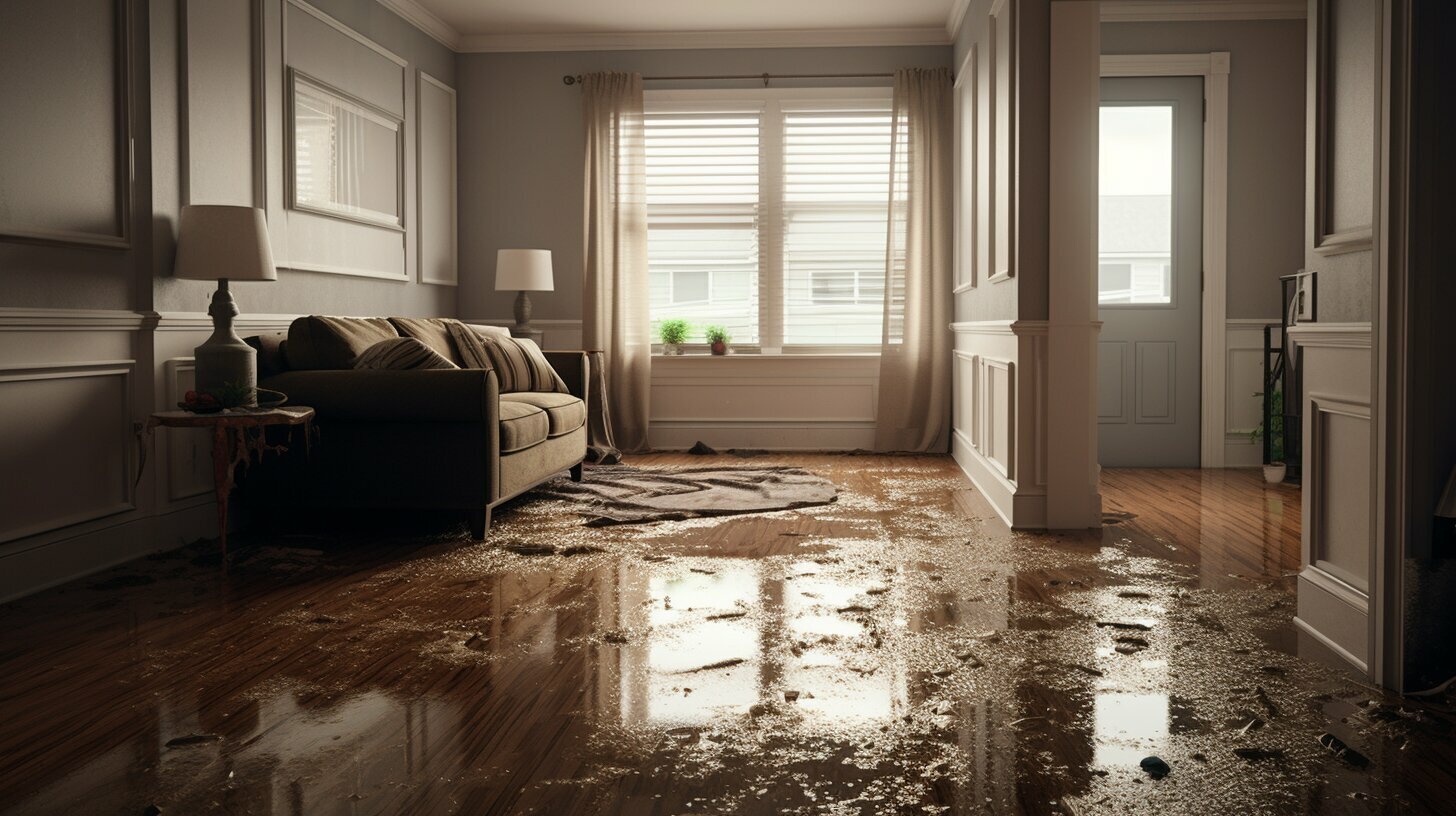Water damage in your home can be a stressful and overwhelming experience. Whether it's from a burst pipe, flooding, or a leak, taking immediate action is crucial to prevent further damage and health hazards.
In this section, we will provide you with expert-guided tips on water damage restoration and help you identify the signs of water damage in your house. We'll also discuss the steps you should take to mitigate the damage and prevent future incidents.
Key Takeaways:
- Water damage restoration requires immediate action to prevent further harm.
- Identifying the signs of water damage can help you assess the extent of the damage.
- Professionals can help restore your home and minimize the risk of long-term damage.
- Preventive measures can significantly reduce the risk of future water damage.
Assess the extent of the water damage
Before you begin the water damage cleanup process, it's essential to assess the extent of the damage. Start by checking for any visible signs of water, such as standing water, dampness, or wet carpeting. Inspect walls, floors, and ceilings for any discoloration, warping, or mold growth. These signs indicate water might have penetrated beneath the surface, causing more extensive damage. When assessing the damage, make sure to determine the source of the water. If it's a pipe burst or leak, turn off the water source immediately to prevent further damage. If the water damage is due to the weather, wait until the storm has passed before beginning the cleanup process. Once you have assessed the damage, document it by taking photos or videos. These will come in handy for insurance purposes and when working with a professional water damage restoration service. Determining the severity of the damage is crucial to decide on the appropriate course of action. If the damage is minor, you can handle it yourself. However, if the damage is significant, it's advisable to seek professional help. When dealing with water damage, it's essential to take quick action to avoid further harm. The sooner you start the cleanup process, the better chances you have of limiting the damage, minimizing repair costs, and safeguarding your health and the structural integrity of your home. With the extent of the water damage evaluated, the next step is to address the immediate damage.Take immediate action to mitigate the damage
Water damage cleanup process can be overwhelming, but taking immediate action can minimize the damage and prevent long-term consequences. Follow these steps: 1. Turn off the water source: If the water damage is due to a burst pipe or leak, turn off the main water supply. This stops the water from continuing to flow, and prevents further damage. 2. Remove standing water: Use buckets, mops, or a wet/dry vacuum to remove any standing water. The longer the water sits, the more damage it can cause. 3. Promote air circulation and drying: Open windows and use fans to increase air flow and help dry the affected area. This will also prevent mold growth. 4. Move furniture and valuables: Move any furniture, electronics, and valuables to a dry area to prevent further damage. Prevention measures for water damage can also help minimize the risk of future incidents.Call professionals for water damage restoration
While you may be able to handle some aspects of water damage cleanup, it's best to call in the professionals for more extensive restoration. Water damage restoration specialists have the knowledge, expertise, and equipment needed to effectively dry and repair your home. Professional help for water damage restoration involves using advanced techniques and water damage repair techniques like dehumidification, drying mats, and specialized drying agents to remove moisture and prevent mold growth. The professionals will also inspect the area thoroughly to assess the extent of the damage and determine the best course of action. Water damage repair techniques used by professionals ensure that all moisture is removed, preventing any long-term damage to your home. Attempting water damage restoration without the proper knowledge or equipment may result in further damage to your home and even mold growth. When searching for a professional to handle your water damage restoration, make sure to choose someone who is licensed, insured, and experienced in handling your specific type of water damage. With the help of a professional, you can get your home back to its pre-damage state quickly and safely. If you experience any water damage, don't hesitate to call for professional help. Taking prompt action ensures minimal damage and helps to prevent additional long-term problems.Preventing future water damage
Now that you have addressed the immediate water damage, it is essential to take preventive measures to avoid future incidents. Here are some prevention measures to consider:- Regularly inspect your plumbing system for leaks and promptly fix any issues. This is especially important during the winter months when freezing pipes can cause damage.
- Install a sump pump in basements or areas prone to flooding. This will help pump out excess water in case of flooding.
- Ensure proper drainage around your home's foundation. This can be achieved by grading the ground away from your home or installing a drainage system.
- Consider waterproofing vulnerable areas like basements and crawl spaces. This can help prevent future water damage and mold growth.
- It's also important to have adequate insurance coverage to protect your home in cases of water damage. Review your policy to make sure you are covered.





